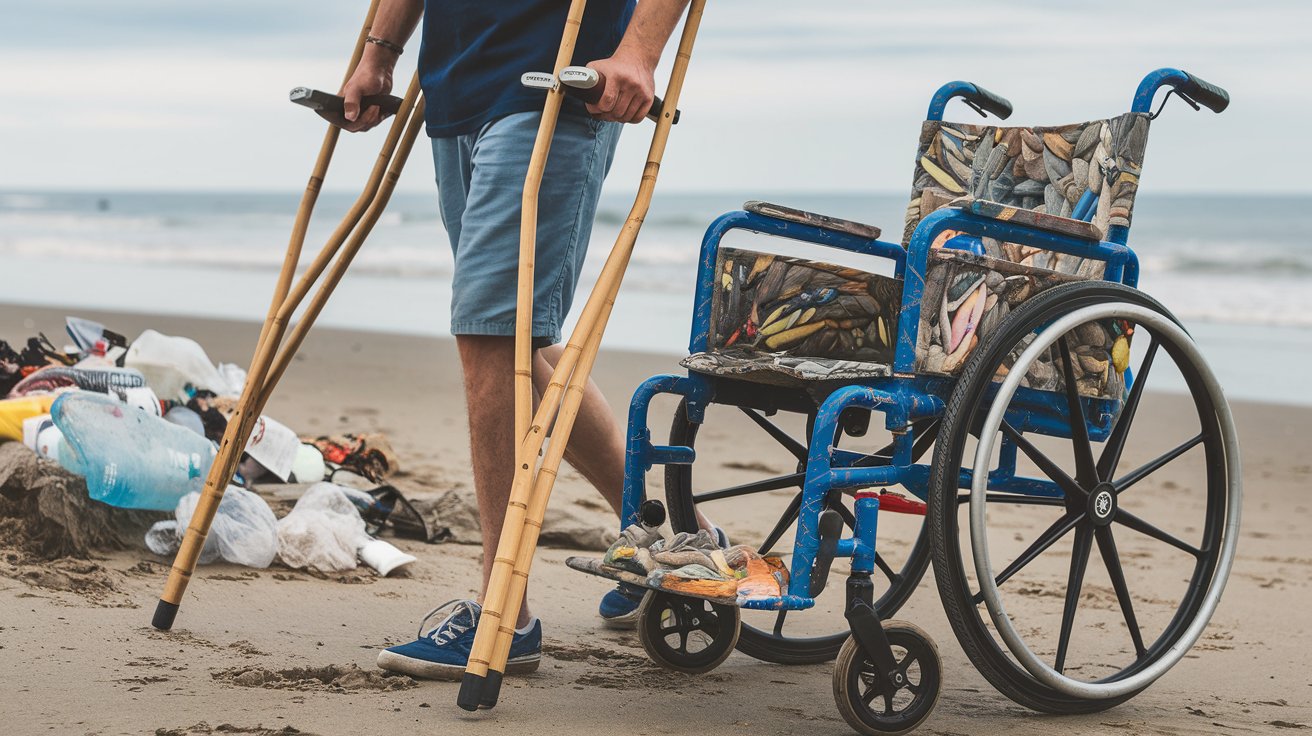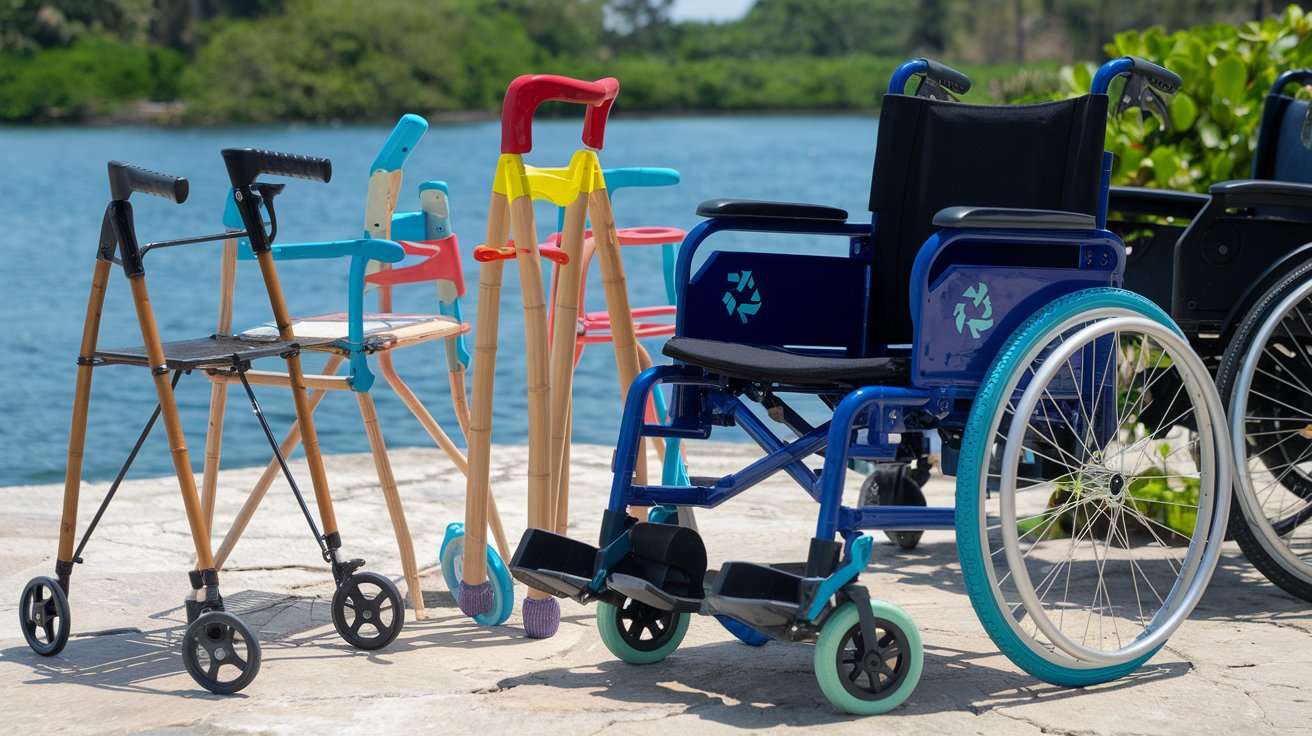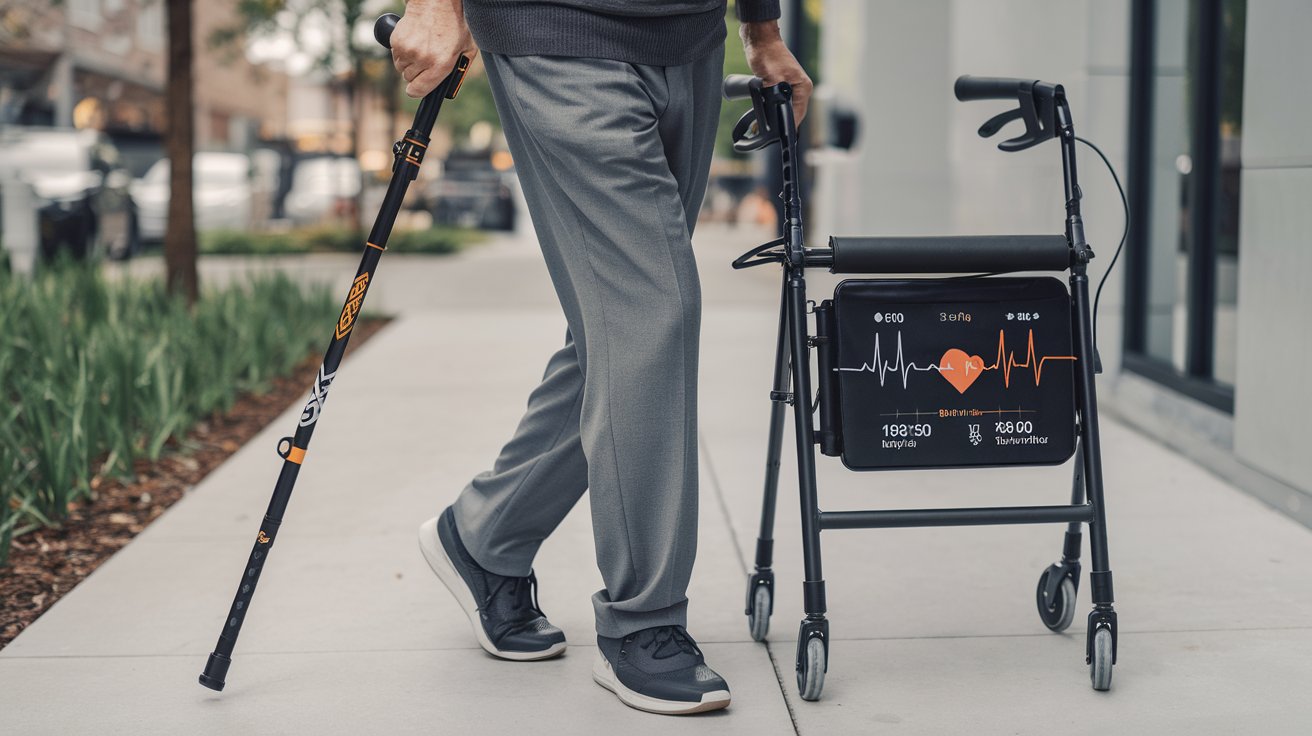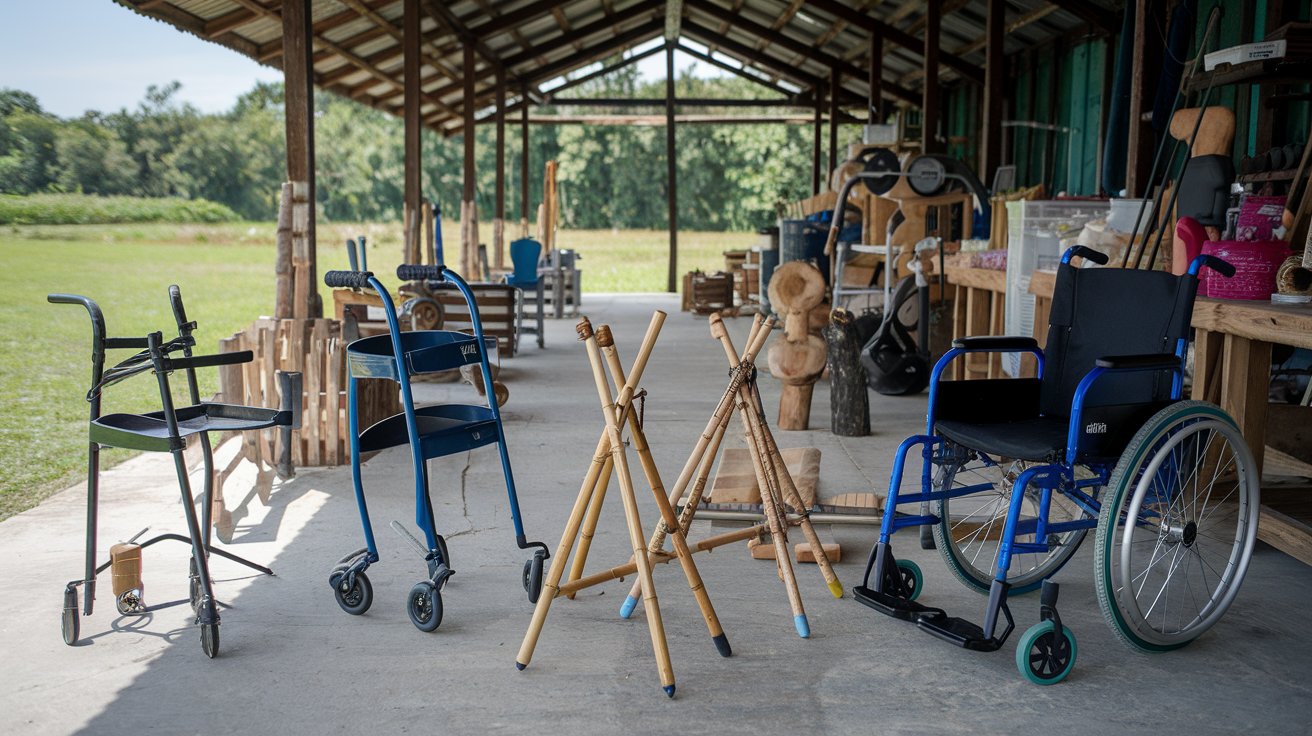How Do I Choose The Right Mobility Aid For Arthritis?

Arthritis is a common condition that affects millions of people worldwide, causing pain, stiffness, and reduced mobility in the joints. For those living with arthritis, everyday activities like walking, climbing stairs, or even standing for long periods can become challenging. This is where mobility aids can make a significant difference.
Mobility aids are specially designed tools that help individuals maintain their independence, reduce joint strain, and improve overall quality of life. However, with so many options available—ranging from canes and walkers to wheelchairs and scooters—choosing the right aid can feel overwhelming.
In this guide, we’ll explore the different types of mobility aids suitable for arthritis, the key features to look for, and practical tips to help you make an informed decision. Whether you’re seeking better support for mild arthritis or a more robust solution for severe symptoms, finding the right mobility aid can empower you to move with confidence and ease.
Table of Contents
Types of Mobility Aids for Arthritis
Arthritis can make everyday activities more challenging, but the right mobility aids can offer relief and help you stay active. Here's a friendly guide to the most common types of mobility aids designed to make life easier for individuals with arthritis:
1. Canes
Canes are great for providing extra balance and support.
- Standard Canes: Perfect for mild arthritis, offering light support.
- Quad Canes: With four small legs at the base, these provide greater stability.
- Ergonomic Handles: Many canes have specially designed handles to reduce hand strain, making them arthritis-friendly.
Pros:
- Lightweight and portable.
- Affordable and easy to use.
- Improves balance and stability.
Cons:
- Limited support for severe arthritis.
- Prolonged use can strain the wrist or hand.
- May not suit individuals with significant mobility issues.
2. Walkers
Walkers offer more support than canes, making them ideal for those with severe arthritis in the hips, knees, or feet.
- Standard Walkers: Provide sturdy support with a simple frame you lift slightly as you move.
- Wheeled Walkers: Equipped with two or more wheels, these are easier to push and maneuver.
- Rollators: These advanced walkers come with wheels, a seat, and brakes for resting during long walks.
Pros:
- Provides more stability than canes.
- Suitable for arthritis in multiple joints, such as knees and hips.
- Variants like rollators include seats and storage for convenience.
Cons:
- Bulky and harder to transport.
- Wheeled models may not work well on uneven surfaces.
- Some users may find them difficult to maneuver in tight spaces.
3. Wheelchairs and Scooters
For individuals with limited mobility, wheelchairs and scooters can offer freedom.
- Manual Wheelchairs: A great option if you have upper-body strength.
- Electric Wheelchairs and Mobility Scooters: Perfect for conserving energy and moving over longer distances. Scooters are particularly easy to use and come in lightweight models.
Pros:
- Excellent for severe arthritis or long distances.
- Electric models conserve energy.
- Reduces joint strain entirely during use.
Cons:
- Expensive, especially electric options.
- Requires storage space and occasional maintenance.
- May lead to reduced physical activity and muscle use over time.
4. Orthopedic Shoes and Inserts
Arthritis in the feet can make walking painful. Orthopedic shoes and inserts offer:
- Extra cushioning.
- Arch support.
- Shock absorption.
These aids reduce joint stress and make walking more comfortable.
Pros:
- Customizable for your specific needs.
- Reduces pressure on arthritic joints in the feet.
- Improves comfort and alignment while walking.
Cons:
- Can be costly if custom-made.
- May take time to adjust to wearing them.
- Not a comprehensive solution for severe mobility issues.
5. Bathroom Mobility Aids
Bathrooms can be tricky for those with arthritis, but tools like these add safety and convenience:
- Grab Bars: Installed near toilets and tubs for extra support.
- Shower Chairs: Let you sit comfortably while showering.
- Raised Toilet Seats: Minimize the need to bend, easing strain on your joints.
Pros:
- Increases safety and reduces fall risks.
- Simple to install and use.
- Makes daily hygiene routines more manageable.
Cons:
- Requires proper installation, especially for grab bars.
- Some aids, like raised toilet seats, can feel awkward initially.
- Limited portability—useful only in specific areas.
6. Reachers and Grabbers
Simple yet effective, these tools help you pick up items without bending or straining. They’re especially useful for arthritis in the hands or back.
Pros:
- Lightweight and affordable.
- Reduces strain on the back, knees, and hands.
- Easy to use for picking up items or reaching high shelves.
Cons:
- Limited durability for heavy or frequent use.
- May not work well for small or slippery items.
- Requires some hand strength, which can be challenging for severe arthritis.
7. Compression Gloves and Braces
While not mobility aids in the traditional sense, these help support arthritic joints and reduce pain. Compression gloves are particularly helpful for maintaining grip strength.
Pros:
- Relieves joint pain and swelling.
- Enhances grip strength for daily tasks.
- Non-invasive and easy to wear.
Cons:
- May feel uncomfortable in warm weather.
- Not suitable for prolonged use in some cases.
- Provides support but doesn’t improve mobility directly.
8. Stair Lifts
For those with arthritis in the knees or hips, climbing stairs can feel daunting. Stair lifts allow you to move between floors safely and comfortably.
Pros:
- Eliminates the strain of climbing stairs.
- Enhances safety and independence at home.
- Easy to operate with minimal effort.
Cons:
- Expensive to install and maintain.
- Requires professional installation.
- Not portable—limited to one staircase.
The best mobility aid for arthritis depends on your specific needs and lifestyle. Don’t hesitate to consult a healthcare professional for personalized advice.
Factors to Consider When Choosing a Mobility Aid
Finding the right mobility aid for arthritis can make a huge difference in your daily life. But with so many options out there, it’s important to consider a few key factors to ensure the aid you choose meets your needs.
Here’s a guide to help you make the best choice:
1. Type and Severity of Arthritis
Different types of arthritis (like osteoarthritis or rheumatoid arthritis) affect mobility in unique ways.
- Mild Arthritis: A cane or ergonomic tool might be enough for light support.
- Moderate to Severe Arthritis: Walkers, rollators, or even wheelchairs may offer the stability and comfort you need.
Tip: Consider which joints are affected (e.g., knees, hips, hands) to select an aid that targets your specific challenges.
2. Your Daily Activities
Think about how and where you’ll use the mobility aid:
- Do you need support for short distances around the house?
- Will you use it outdoors, on uneven terrain, or for shopping trips?
- Does it need to fit into your car or be easy to transport?
For example, a lightweight walker with wheels might suit someone on the go, while a sturdier model may work better at home.
3. Comfort and Ergonomics
Mobility aids should ease arthritis pain, not add to it! Look for features like:
- Ergonomic Handles: Reduce strain on your hands and wrists.
- Adjustable Heights: Ensure proper posture and reduce joint stress.
- Cushioned Seats (in rollators): Provide a place to rest when needed.
Tip: Try out the aid before purchasing to ensure it feels comfortable and natural.
4. Weight and Portability
Lightweight aids are easier to maneuver and transport, especially for arthritis in the hands or arms.
- Folding Options: Great for compact storage and travel.
- Wheeled Models: Easier to push, especially if lifting is difficult for you.
5. Stability and Safety
Safety is crucial when choosing a mobility aid. Look for:
- A sturdy frame that can support your weight.
- Anti-slip tips on canes or walkers.
- Brakes on rollators and wheelchairs for added control.
Tip: If balance is a significant concern, opt for aids with a wider base of support, like a quad cane or a walker.
6. Ease of Use
Complicated aids can feel frustrating. Choose one that fits seamlessly into your lifestyle:
- Does it have simple mechanisms (e.g., easy-to-grip brakes or folding buttons)?
- Can you adjust or operate it without straining?
7. Budget and Insurance
Mobility aids come in a wide price range, so set a budget and explore your options:
- Affordable Options: Canes and basic walkers are often the least expensive.
- Insurance Coverage: Check if your insurance or Medicare covers certain aids, especially larger ones like wheelchairs or scooters.
8. Aesthetic and Personal Preference
Mobility aids now come in various designs, colors, and materials. Choose one that makes you feel confident and fits your style because functionality doesn’t have to mean boring!
9. Future Needs
Arthritis symptoms can change over time. Consider an aid that can adapt to your future needs, such as a walker that can convert to a rollator.
The right mobility aid for arthritis is about balancing your current needs, comfort, and lifestyle. Don’t hesitate to test different options or consult a healthcare professional for advice. With the right aid, you’ll move more confidently and comfortably!
Key Features to Look For in Mobility Aids for Arthritis
When choosing a mobility aid for arthritis, it’s essential to focus on features that enhance comfort, support, and ease of use. Here's a friendly guide to what you should look for:
1. Comfortable and Ergonomic Design
Mobility aids should minimize strain on arthritic joints. Look for:
- Ergonomic Handles: These reduce pressure on hands and wrists.
- Padded Seats: Ideal for walkers or rollators with built-in chairs.
- Adjustable Height: Ensures the aid fits your body perfectly, reducing discomfort.
2. Lightweight but Sturdy Materials
- Lightweight: Makes it easier to carry and maneuver.
- Durable Construction: Look for aids made from aluminum or reinforced plastic for a balance of weight and strength.
- Anti-Slip Features: Rubber-tipped canes or walkers provide better grip on various surfaces.
3. Ease of Maneuverability
Mobility aids should adapt to your lifestyle. Consider:
- Swivel Wheels: For walkers and rollators, these improve navigation in tight spaces.
- Compact Folding: Helps with storage and portability, especially for travel.
- Smooth Operation: Handles and brakes should be easy to use, even for arthritic hands.
4. Supportive Features
The right mobility aid provides stability and reduces joint stress. Look for:
- Wide Bases: Canes with wider bases or quad canes offer extra balance.
- Shock Absorption: Some aids have built-in features to reduce joint impact.
- Weight Capacity: Ensure the aid can safely support your body weight.
5. Customizable Adjustments
Arthritis symptoms can vary, so having adjustable options is helpful:
- Height Adjustability: Prevents hunching or overextending.
- Removable Parts: For example, walkers with detachable baskets or seats for added convenience.
- Interchangeable Accessories: Cane tips, grips, or additional padding can be customized.
6. Safety Features
Your safety is important when dealing with arthritis. Key safety features include:
- Non-Slip Surfaces: For both grips and bases.
- Secure Braking Systems: Especially on rollators and scooters.
- Reflective Elements: Helps with visibility if you’re using the aid outdoors at night.
7. Ease of Use
Mobility aids should simplify your life, not complicate it. Look for:
- Simple Mechanisms: Aids that are easy to fold, adjust, or assemble.
- Minimal Force Required: Ideal for opening, closing, or moving the aid.
- Maintenance-Free Designs: Durable models that require little upkeep.
8. Aesthetic Appeal
It might seem minor, but a mobility aid you like the look of can boost confidence. Many aids come in:
- Various colors and finishes.
- Sleek designs that feel modern rather than clinical.
- Fun patterns for added personality.
Maintaining and Using Your Mobility Aid Effectively
Keeping your mobility aid in good condition ensures it serves you well and keeps you safe. Here are some friendly tips:
Clean Regularly:
- Use a damp cloth to wipe down handles, seats, and frames.
- Check for dirt or debris in wheels and moving parts.
Inspect for Wear and Tear:
- Look for cracks, loose screws, or worn-out grips.
- Ensure wheels and brakes (if applicable) work properly.
Follow Manufacturer’s Instructions:
- Refer to the manual for maintenance schedules and specific care guidelines.
- Replace parts as recommended to keep your aid functioning like new.
Practice Proper Use:
- Learn how to adjust your aid for height and comfort.
- Use it as intended—don’t lean too heavily on canes or walkers not designed for full weight-bearing.
Store Safely:
- Keep your aid in a dry, accessible spot to prevent rust or damage.
- For larger aids like scooters or wheelchairs, ensure batteries (if electric) are charged regularly.
Consulting Professionals for Guidance
Choosing and using the right mobility aid can feel overwhelming, but consulting professionals makes it easier. Here’s how they can help:
Occupational Therapists:
- Assess your mobility needs and recommend suitable aids.
- Teach you how to use them safely and efficiently.
Physiotherapists:
- Provide exercises to complement your mobility aid use.
- Offer tips on maintaining joint strength and flexibility.
Medical Equipment Specialists:
- Help you choose the right model based on your arthritis type and daily activities.
- Assist with fittings and adjustments for maximum comfort.
Healthcare Providers:
- Monitor your condition and suggest changes to your aid if needed.
- Provide referrals to specialists for advanced mobility solutions.
Always feel free to ask questions—professionals are there to guide and support you!
FAQs About Mobility Aids for Arthritis
Here are some common questions about mobility aids, answered simply:
Q: How do I know if I need a mobility aid?
A: If arthritis makes it hard to walk, balance, or complete daily tasks, a mobility aid might help. Talk to your doctor or therapist for advice.
Q: Can I use a mobility aid if I only have mild arthritis?
A: Absolutely! A cane or ergonomic tool can ease strain on joints and prevent symptoms from worsening.
Q: Are mobility aids covered by insurance?
A: Many insurance plans cover mobility aids if prescribed by a doctor. Check with your provider to confirm what’s included.
Q: How do I choose the right aid for my needs?
A: Consider your arthritis type, activity level, and lifestyle. A professional evaluation is the best way to ensure the perfect fit.
Q: What if I feel embarrassed using a mobility aid?
A: Mobility aids are tools for independence, not limitations! Think of them as empowering—you’re taking charge of your comfort and mobility.
Q: Can I customize my mobility aid?
A: Yes! Many aids come with options for colors, grips, and accessories. Customization can make your aid more personal and enjoyable to use.
Final Thought
Taking care of your mobility aid and consulting professionals ensures you get the most out of it. Remember, mobility aids are there to support your independence and enhance your quality of life. Don’t hesitate to explore options and ask for help when needed!


